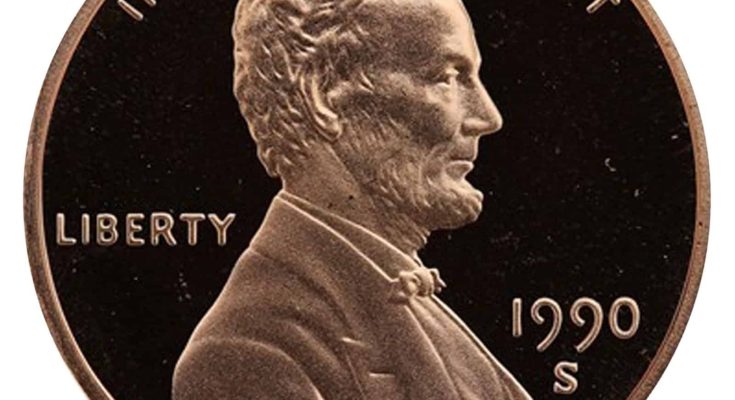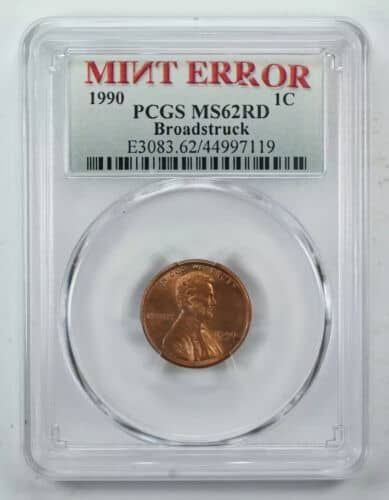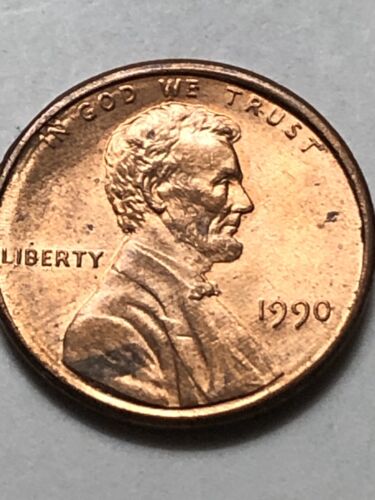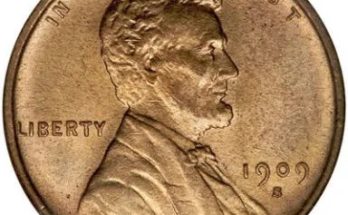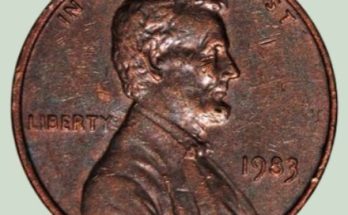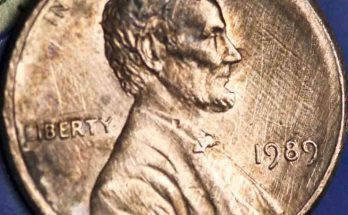Have you ever wondered how much money you can get for a 1990 penny? Are you curious if it’s even worth it to collect these coins? Well, these are some of the questions we are going to answer today.
In this post, we’ll do a deep dive into the 1990 penny value, its history, key features, varieties, and possible errors.
1990 Penny Details
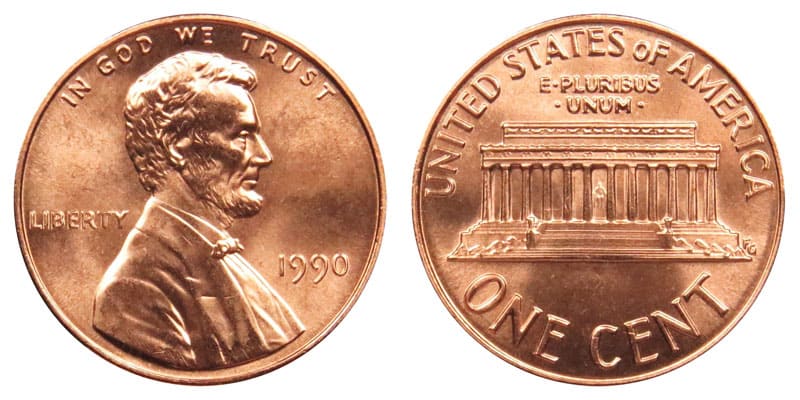
- Category: Lincoln Cents
- Total Mintage: 11,777,959,100
- Minting place: Philadelphia, Denver, San Francisco
- Weight: 2.5 g
- Diameter: 19 mm
- Edge: Plain
- Face value: $0.01 (1 cent)
- Composition: 97.5% zinc and 2.5% copper
- Observe designer: Victor D. Brenner
- Reverse designer: Frank Gasparro
The 1990 Penny’s Obverse Design
The 1990 penny’s obverse bears the image of Abraham Lincoln facing right. To the lower right side of Lincoln, the year 1990 is inscribed. Also, the word “LIBERTY” is written horizontally to the left of Lincoln, behind his neck.
On top of the coin, along its top rim the words “IN GOD WE TRUST” are engraved. Interestingly, the initials of the obverse’s designer, VDB, are written along the cutoff of Lincoln’s shoulder.
This obverse design was originally made by artist Victor D. Brenner in 1909. The only difference between what he created and the 1990 version is the “IN GOD WE TRUST” legend.
The 1990 Penny’s Reverse Design
The 1990 penny’s reverse has the image of the Lincoln Memorial in its center. On top of this building, the words “E PLURIBUS UNUM” are engraved. There is a dot between each word and one at the end.
This Latin motto means “out of many, one”. It refers to the fact that the United States is a nation made of many states. On top of these words, along the top rim of the coin, the words “UNITED STATES OF AMERICA” are engraved.
These words start from the left side of the coin to the right side. Below the memorial, the words “ONE CENT” are written along the bottom rim. These words are in a bigger font than the other words in this design.
This reverse design was made by Frank Gasparro, the mint’s chief engraver from 1965 to 1981.
Other Features of the 1990 Penny
The 1990 penny has a diameter of 19 mm and a weight of 2.5 grams. It is made of copper-plated zinc and has a smooth plain edge.
Also Read: Top 20 Most Valuable Old Pennies Worth Money (Penny Collection)
1990 Penny Value Chart
| 1990 Penny Value Chart | ||||
| Condition | 1990 No Mint Mark Penny (P) | 1990 “D” Penny | 1990 “S” Penny | 1990 “S” No Mint Mark Penny |
| Good | $0.01 | $0.01 | N/A | N/A |
| Fine | $0.01 | $0.01 | N/A | N/A |
| Extremely Fine | $0.1 to $0.25 | $0.1 to $0.25 | N/A | N/A |
| Uncirculated | $0.34 to $7,200 | $6 to $3,000 | $6 to $3,000 | $2,500 to $20,700 |
1990 Penny Value and Varieties Guide
1990 No Mint Mark Penny (P) Value
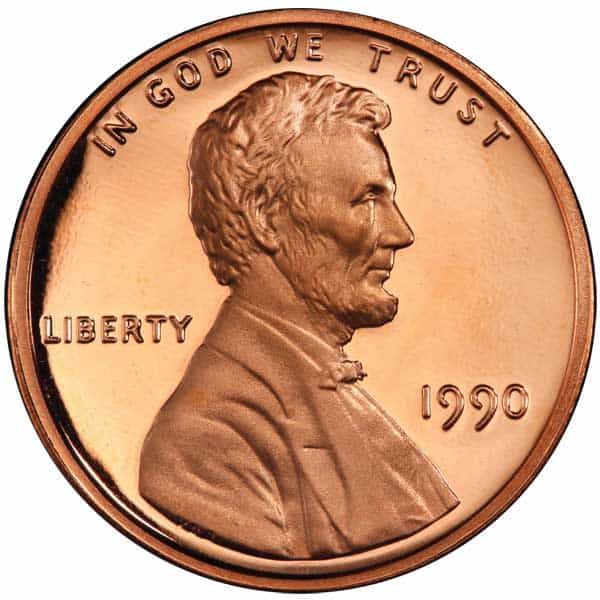
- Type: Lincoln Cents
- Mint Mark: None
- Minting place: Philadelphia
- Year: 1990
- Edge: Plain
- Mintage: 6,851,765,000
- Designer: Victor D. Brenner and Frank Gasparro
- Face value: $0.01
- Current value: $0.01 to $7,200
- %Composition: 97.5% zinc and 2.5% copper
- Mass: 2.5 g
- Diameter: 19 mm
In 1990, the Philadelphia mint produced 6,851,765,000 pennies; none of them had mint marks. This was the highest mintage of 1990 pennies. As such, they are readily available to this day, especially in good and fine grades.
However, they are not that valuable; you can get one for as low as one cent. Even the extremely fine ones will usually go for around 25 cents per piece. The uncirculated ones can go for $5 to $550.
A rare sample, a red PCGS MS69 1990 penny from Philadelphia, even went for $7,200. Remember, the redder and the better the condition of the coin, the more valuable it is.
1990 “D” Penny Value
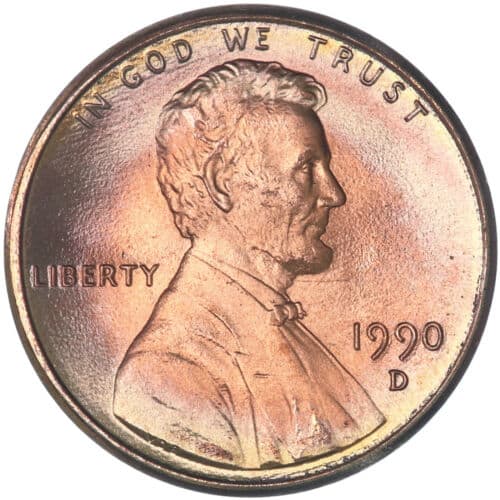
- Type: Lincoln Cents
- Mint Mark: “D”
- Minting place: Denver
- Year: 1990
- Edge: Plain
- Mintage: 4,922,894,533
- Designer: Victor D. Brenner and Frank Gasparro
- Face value: $0.01
- Current value: $0.01 to $3,000
- %Composition: 97.5% zinc and 2.5% copper
- Mass: 2.5 g
- Diameter: 19 mm
In 1990, the Denver mint produced 4,922,894,533 Lincoln cents. Each one had a “D” mint mark. It is located on the coin’s obverse side, just under the 1990 inscription. Due to the high mintage of this coin, it’s still readily available today.
You can buy one for as little as $0.01, especially in low grades. However, a high-grade one can go for thousands of dollars. A red PCGS MS69 1990 D penny even went for $2,937.50 in a 2019 auction.
1990 “S” Penny Value

- Type: Lincoln Cents
- Mint Mark: “S”
- Minting place: San Francisco
- Year: 1990
- Edge: Plain
- Mintage: 3,296,504
- Designer: Victor D. Brenner and Frank Gasparro
- Face value: $0.01
- Current value: $6 to $3,000
- %Composition: 97.5% zinc and 2.5% copper
- Mass: 2.5 g
- Diameter: 19 mm
In 1990, the San Francisco mint produced 3,296,504 pennies that had an “S” mint mark. These were all proof coins. As such, collectors kept these coins in pristine condition and you can still find them in this condition today.
Also, since there were so many of these coins minted, they are not particularly expensive, especially when compared to other proofs. You can even get one for a mere $6. However, a few rare ones have sold for over $2,000 in the past.
1990 “S” No Mint Mark Penny Value
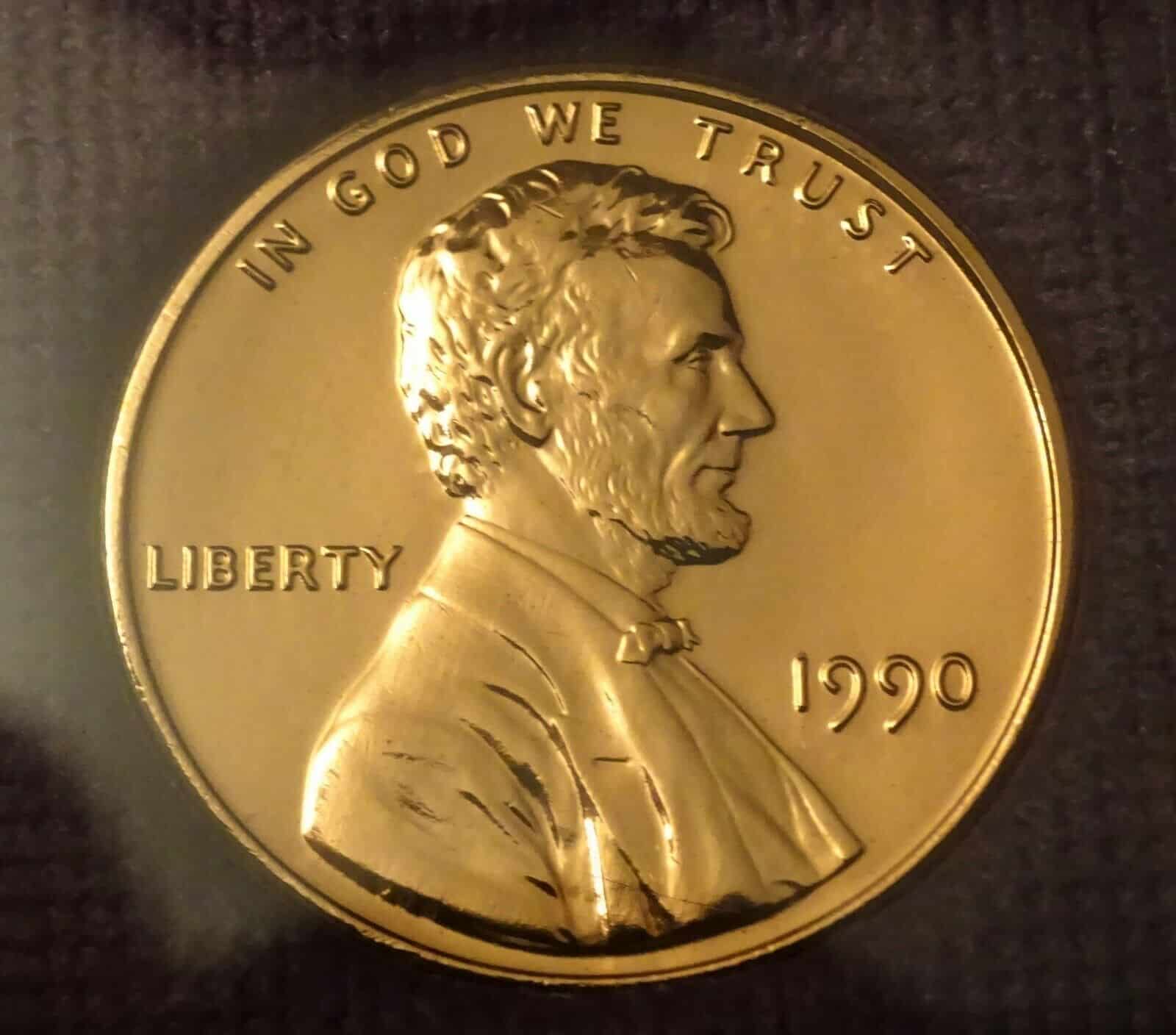
- Type: Lincoln Cents
- Mint Mark: None
- Minting place: San Francisco
- Year: 1990
- Edge: Plain
- Mintage: 3,055
- Designer: Victor D. Brenner and Frank Gasparro
- Face value: $0.01
- Current value: $2,500 to $20,700
- %Composition: 97.5% zinc and 2.5% copper
- Mass: 2.5 g
- Diameter: 19 mm
Apart from the over 3 million proof pennies that had mint marks, the San Francisco mint also produced 3,055 ones that didn’t in 1990. This was an accident. It’s therefore not surprising that these are the only Lincoln pennies to ever lack an “S” mint mark.
The first person to discover their existence was a man called Jim Gullen; he was from New York. When he discovered them, the Mint made an announcement confirming their existence and even confessed to having gotten rid of 145 of these coins already.
These coins remain rare to date; it’s estimated that less than 200 of them still exist. As such, they are usually worth thousands of dollars. A PR69 deep cameo one even sold for a whopping $20,700 in a 2007 auction.
1990 Penny History
The Lincoln cent was first minted in 1909. However, the penny minted in 1909 is not identical to the one minted in 1990 or even today. There have been some changes to this coin’s design and composition over the years.
An artist called Victor D. Brenner made the original obverse and reverse designs of these coins. While the obverse side was edited a little by Charles Barber when the coin was first minted in 1909, most things remained the same until 1958.
The Lincoln cents produced within this time even got the name wheat pennies because they had a unique reverse design bearing two wheat stalks. However, this changed in 1959 when the reverse design started bearing the image of the Lincoln Memorial.
